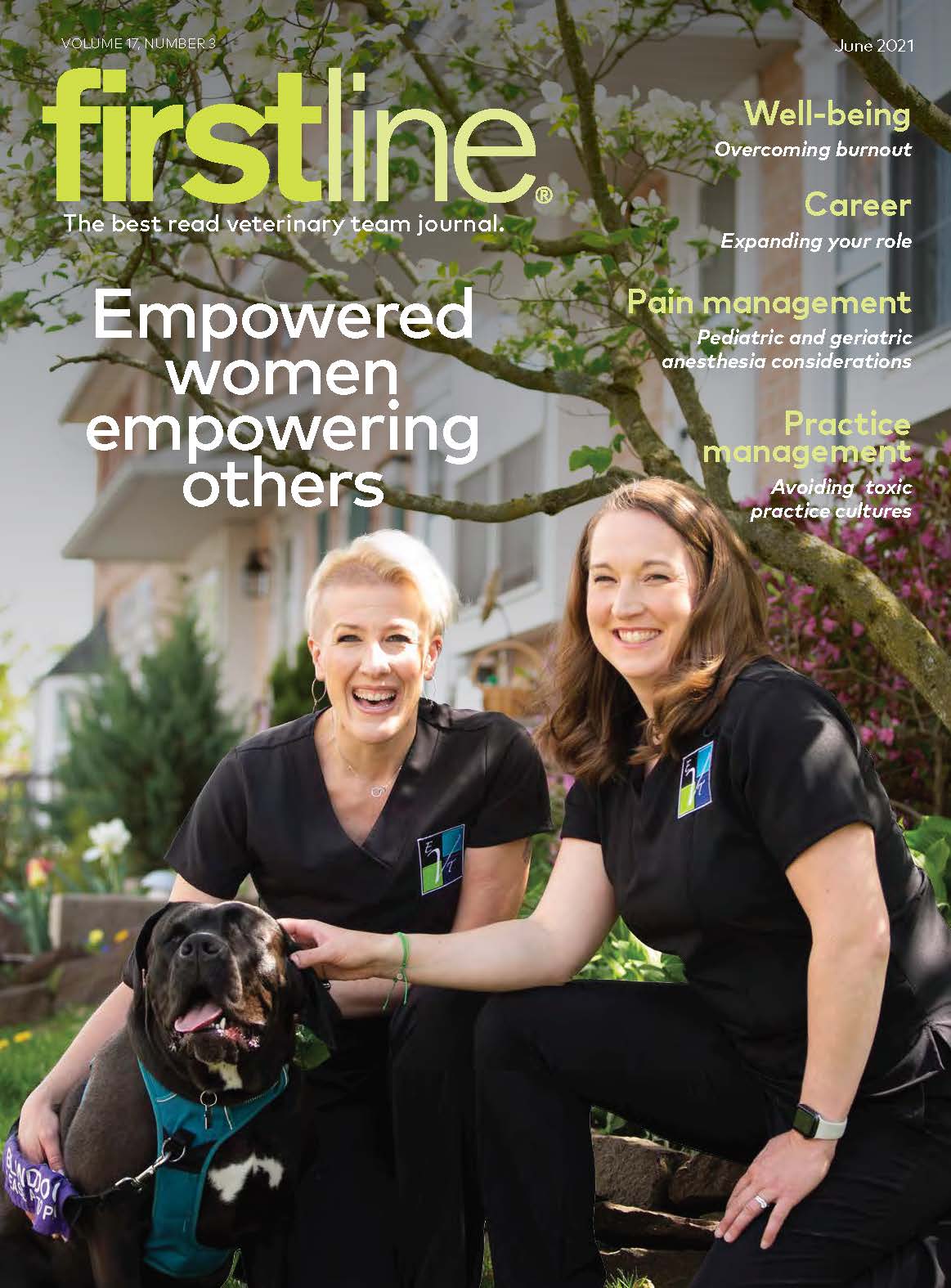So much to say, so little time
Being pressed for time can make you feel like your ship is sinking. Navigate the waves with these useful communication techniques.
A veterinarian recently discussed her challenges with curbside care with me. She explained that her team had finally adjusted to a new routine when one of her favorite patients was suddenly hit by a car and rushed into the clinic. Not only was she devastated, but her schedule was backed up for the rest of the day. There was so much she wanted to say to her clients that day but there was simply not enough time.
Pandemic woes
Perhaps the above story sounds familiar. In addition to curbside care challenges, many veterinary practices are experiencing a staff shortage during the COVID-19 pandemic. Some staff have caught the novel coronavirus and have had to quarantine for 2 weeks. Sadly, some veterinary professionals or their loved ones have succumbed to the disease.
Amid all the chaos, pet ownership has skyrocketed. Although we are thrilled that telework is inspiring more pet adoptions, clinics are overflowing with clients who have tons of questions we don’t always have the leisure of answering. Maybe you feel like the time-crunched veterinarian I was speaking with recently. If you’re feeling pressed, these strategies may help you maximize your day so you can provide the best quality of care to patients and the best service to their owners.
The gift of technology
Telehealth is a simple way to add more time back into your day. For example, daytime triage shortens hold times. If you offer triage after your clinic closes, you can support your clients without personally answering calls.
Telehealth video allows you to see the pet in its home environment, which is especially helpful when there’s a mobility issue. (Cats love not having to get into the carrier to go to their vet!) Virtual visits also free up exam room space, save the client travel time, and usually shorten the time it takes to make a diagnosis. Another lifesaver is software that enables virtual appointments and electronic medical records to be made.
But even with all the above, some clinics feel they don’t have time to explore telehealth options due to the conversion process involved.
Fully utilize technicians
Employing technicians and assistants correctly can significantly help veterinarians in a time crunch. Much upfront information gathering can be done separately from the visit, whether by connecting face-to-face virtually, via telehealth or by telephone.
According to Bob Lester, DVM, veterinarians see around 15 patients a day on average, compared with 22 by optometrists, 24 by general practitioners (GPs), and 30 by dentists.1 Why the variation? Optometrists, GPs, and dentists employ a team health care delivery model. Lester explains that back-of-the-envelope math shows that a clinic would see a 13% increase in patients if technicians took care of 2 daily. This would allow doctors to take on 2 additional patients.
Chunk, chew, and check
When time is of the essence, information needs to be provided in briefer segments. It may be tempting to say a lot at once or within a shorter time period, but pet owners absorb information better in small doses. Think of enjoying a small chunk of food and taking the time to chew through it. Likewise, your client needs time to “chew” over the information you share. Before you deliver another chunk, ensure they understood what you said. Given the time crunch, it may mean providing the next chunk by email, phone, or a follow-up visit.
Relationship building
Have you ever dealt with a salesperson who rattled off a product’s benefits and rushed quickly to the sale? Your client is not purchasing a refrigerator, but rather entering into a long-term relationship with your clinic. That makes the “check” part an essential ingredient in your client discussions. Your responses will determine whether a relationship is ongoing or off-putting.
Even in good long-term relationships, there will be times when your clients are not complying with your recommendations. Was it because you provided too much information at once? Did they not understand? It’s your job to find out and make the necessary adjustments.
Words matter
Let’s face it. Some client conversations are uncomfortable. That’s why choosing your words carefully is key. Avoid using offensive terminology. For example, pet obesity can lead to a wide range of medical conditions if not addressed properly. The problem? Many clients get confused or frustrated by the word “obese.” I recommend using vocabulary such as “a healthy weight,” as it takes the focus off the pet’s girth. Discussing body condition scores can also help guide your client to a data-based assessment. In some cases, you might use your hands to illustrate an ideal weight.
Additionally, try to avoid using “you statements,” as they can cause some clients to become defensive. Some examples include, “You’re being unreasonable,” or “You should call first,” or “You ought to switch to a prescription diet.”
Using alternative “I statements” is a great way to express your concerns while connecting emotionally with your client. For example, after sensing resistance, you might consider saying, “I want to work with you to find the right remedy.”
There is so much to say and so little time to say it. For more efficient and productive appointments, make full use of technology, technicians, and assistants, and choose your words carefully. This will not only save time but build strong and long-lasting veterinarian-patient-client relationships.
Dr Carolyn C. Shadle is the founder of Interpersonal Communication Services, Inc. Passionate about communicating with clients and teammates, she writes extensively and presents at conferences and hospitals frequently about various aspects of practice management. These include communicating in the virtual world, inclusive communication, gaining confidence when engaging with clients, and managing difficult conversations. She can be contacted at www.veterinariancommunication.com.
Reference
- Lester B. Let’s embrace techs and tech. Today’s Veterinary Business. April 2021. Accessed April 26, 2021. https://todaysveterinarybusiness.com/technicians-and-technology/

